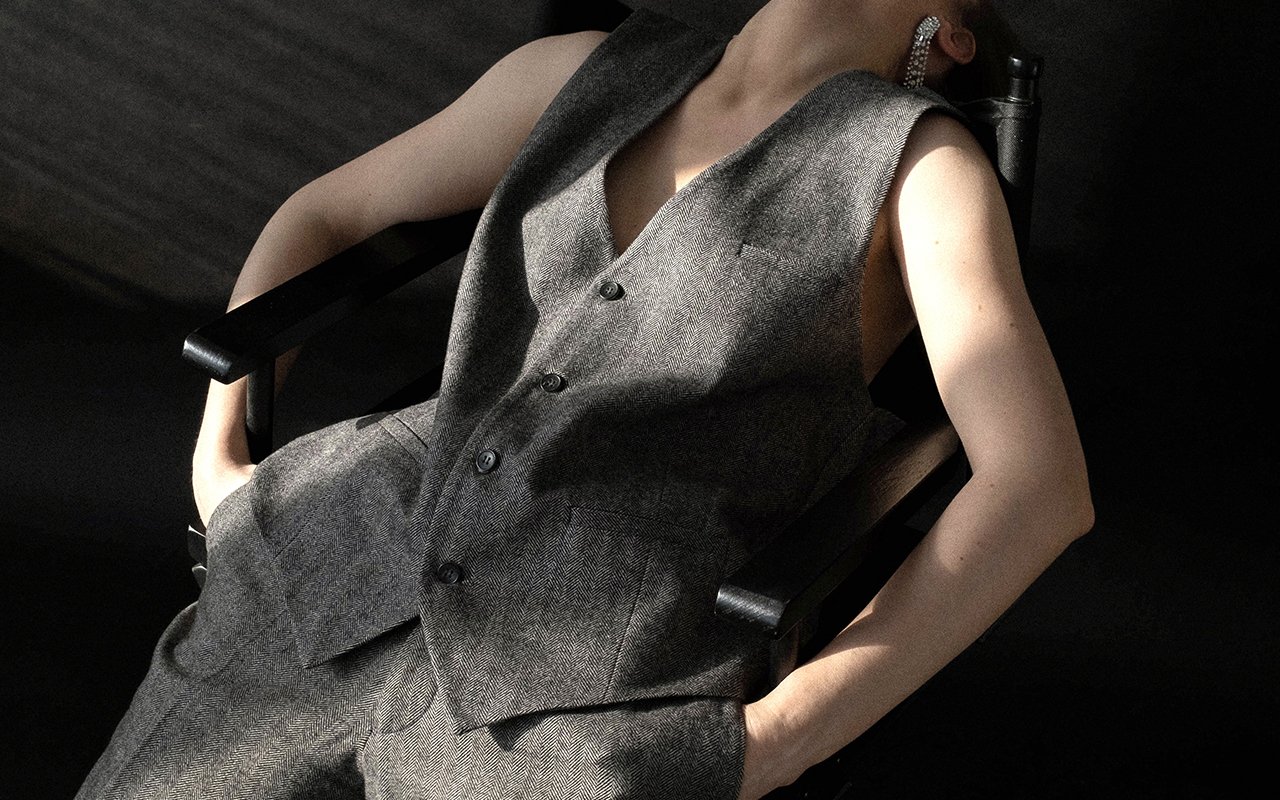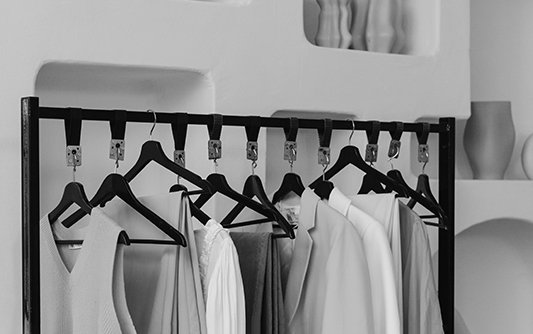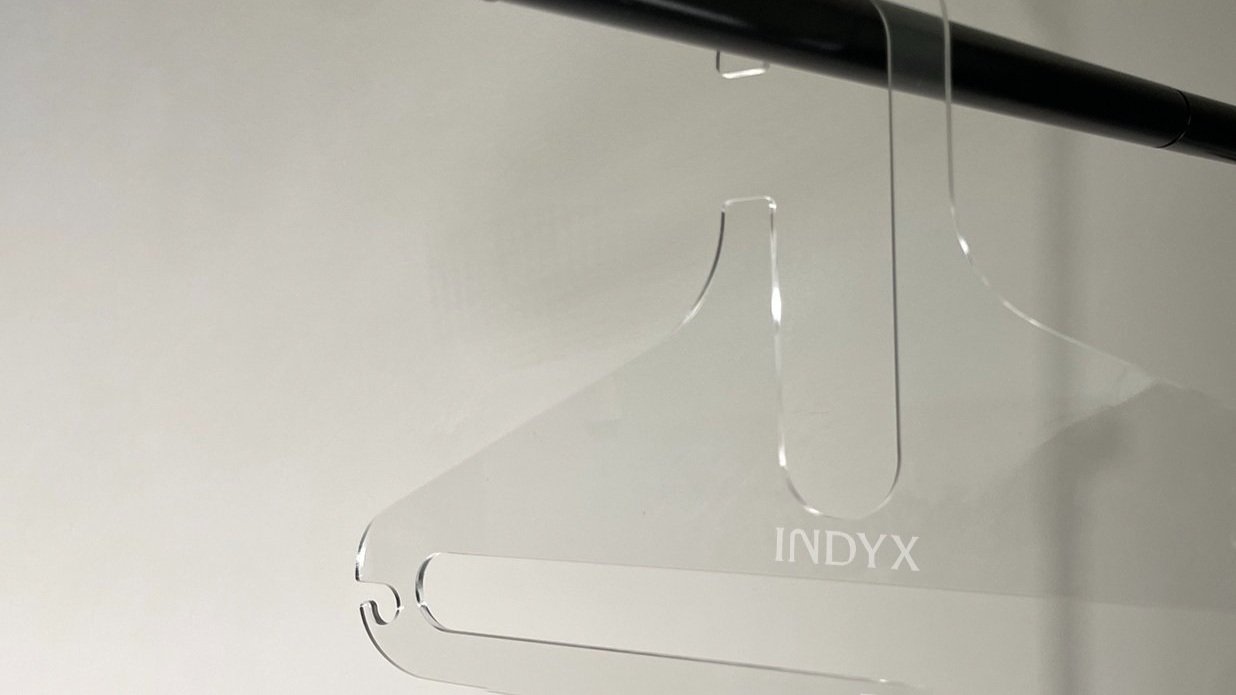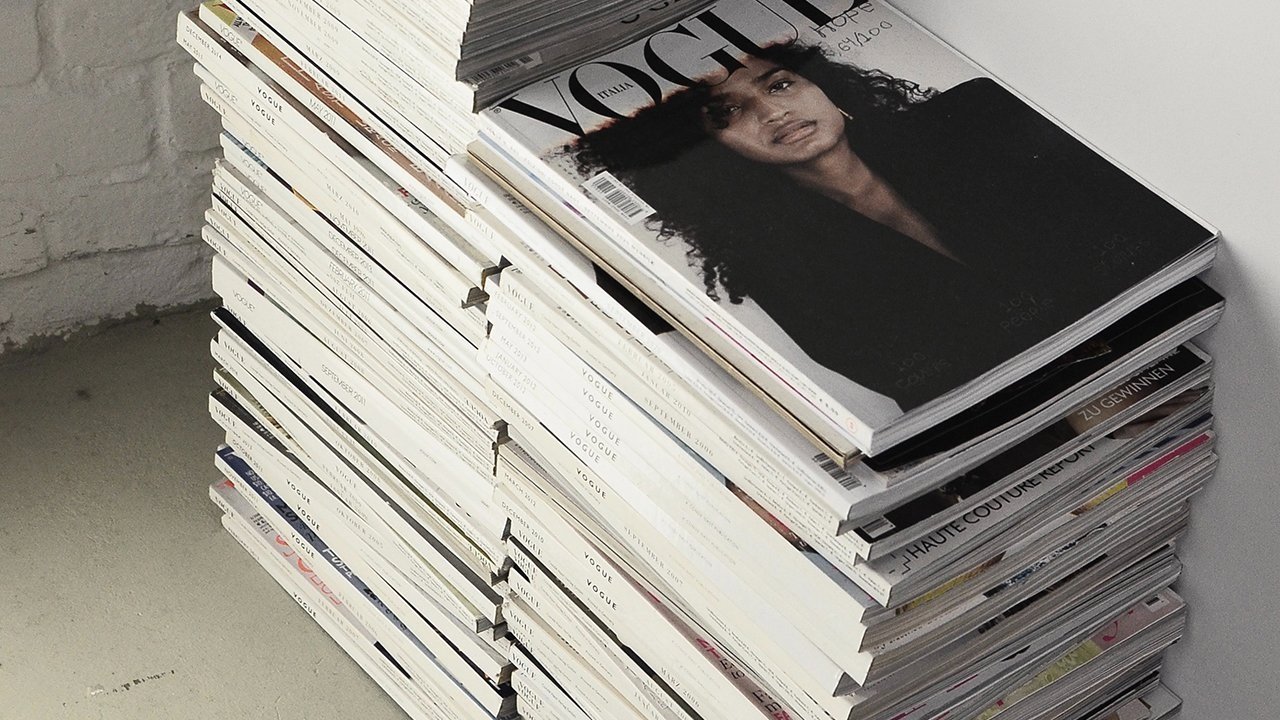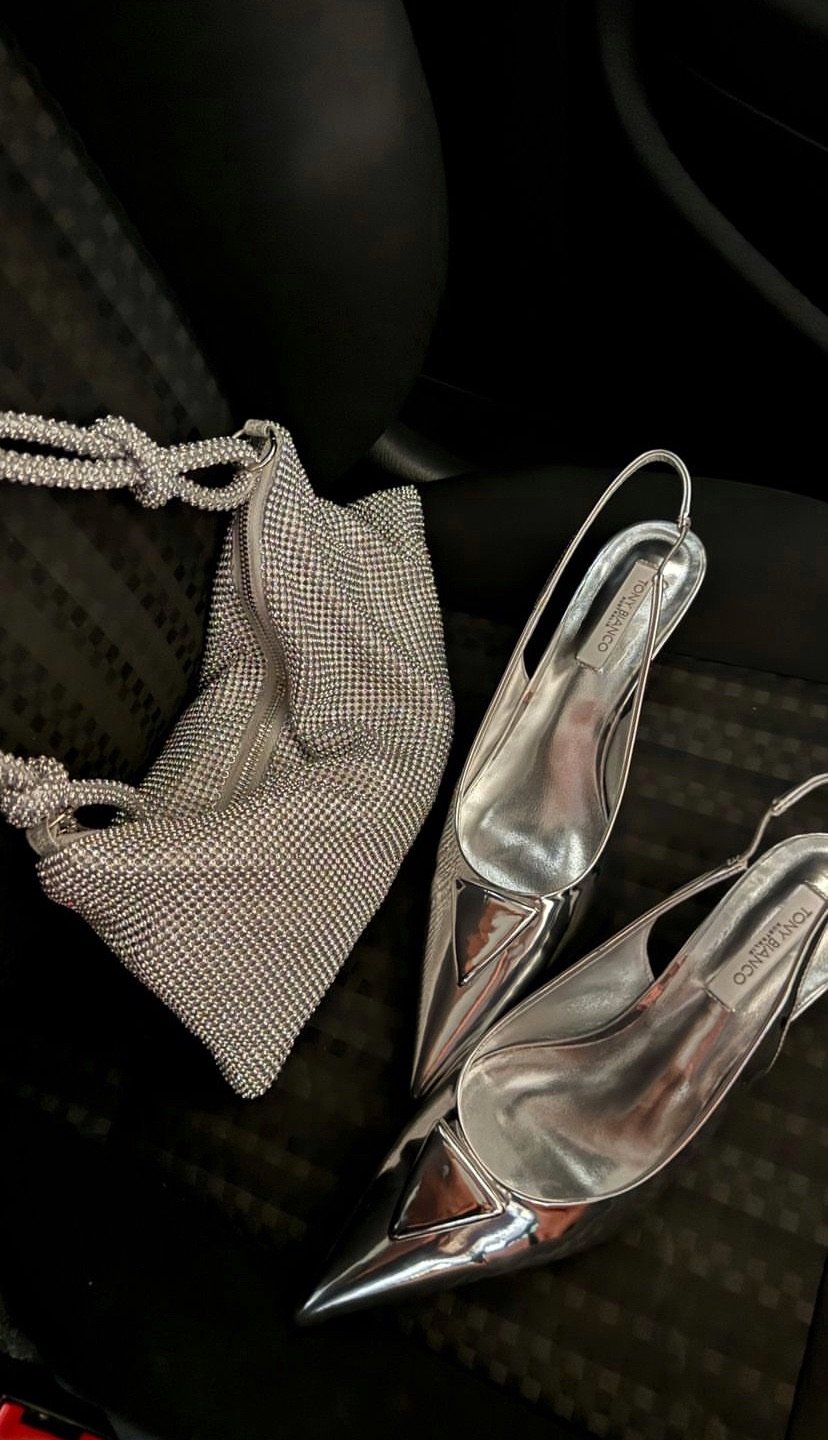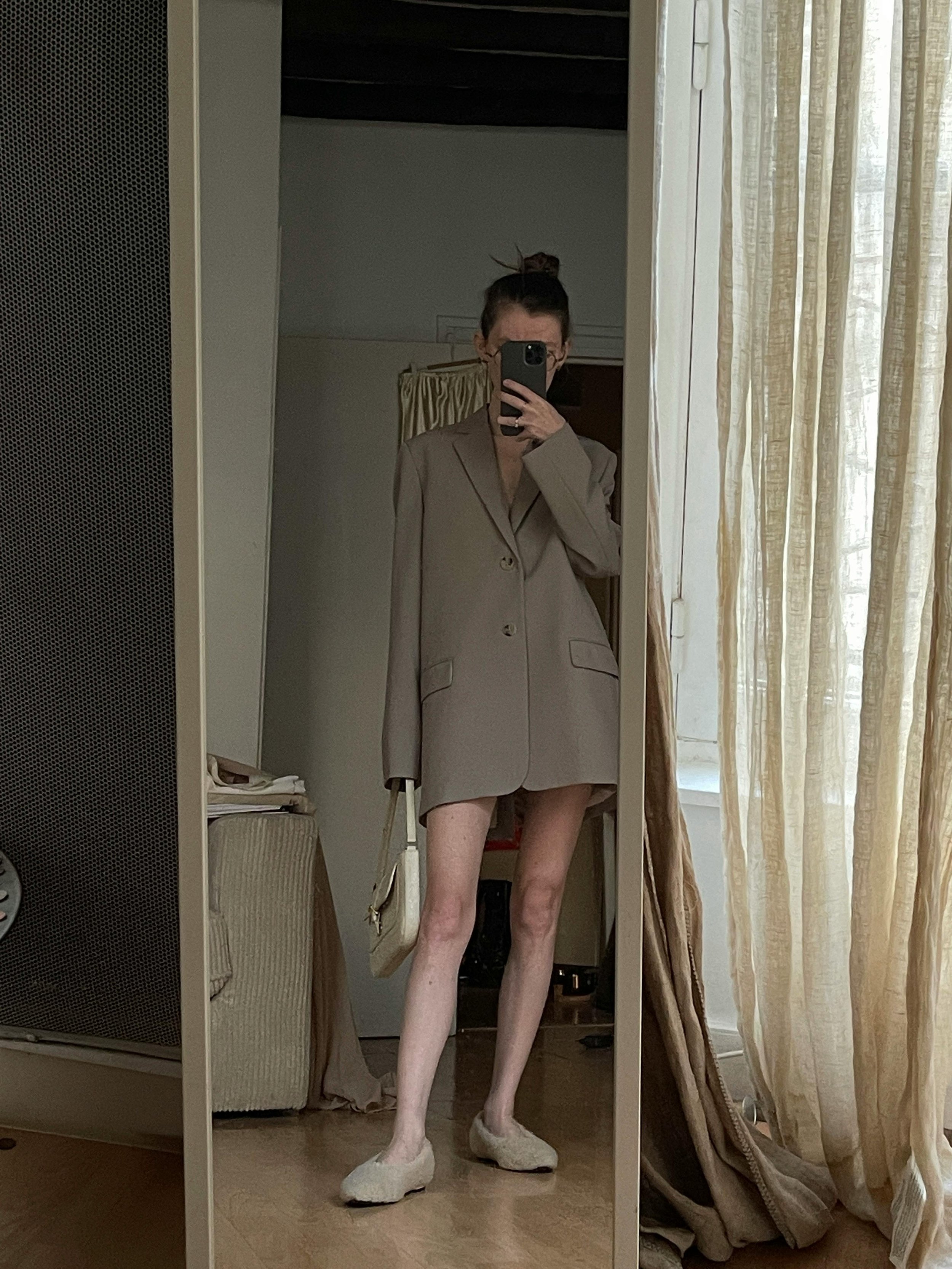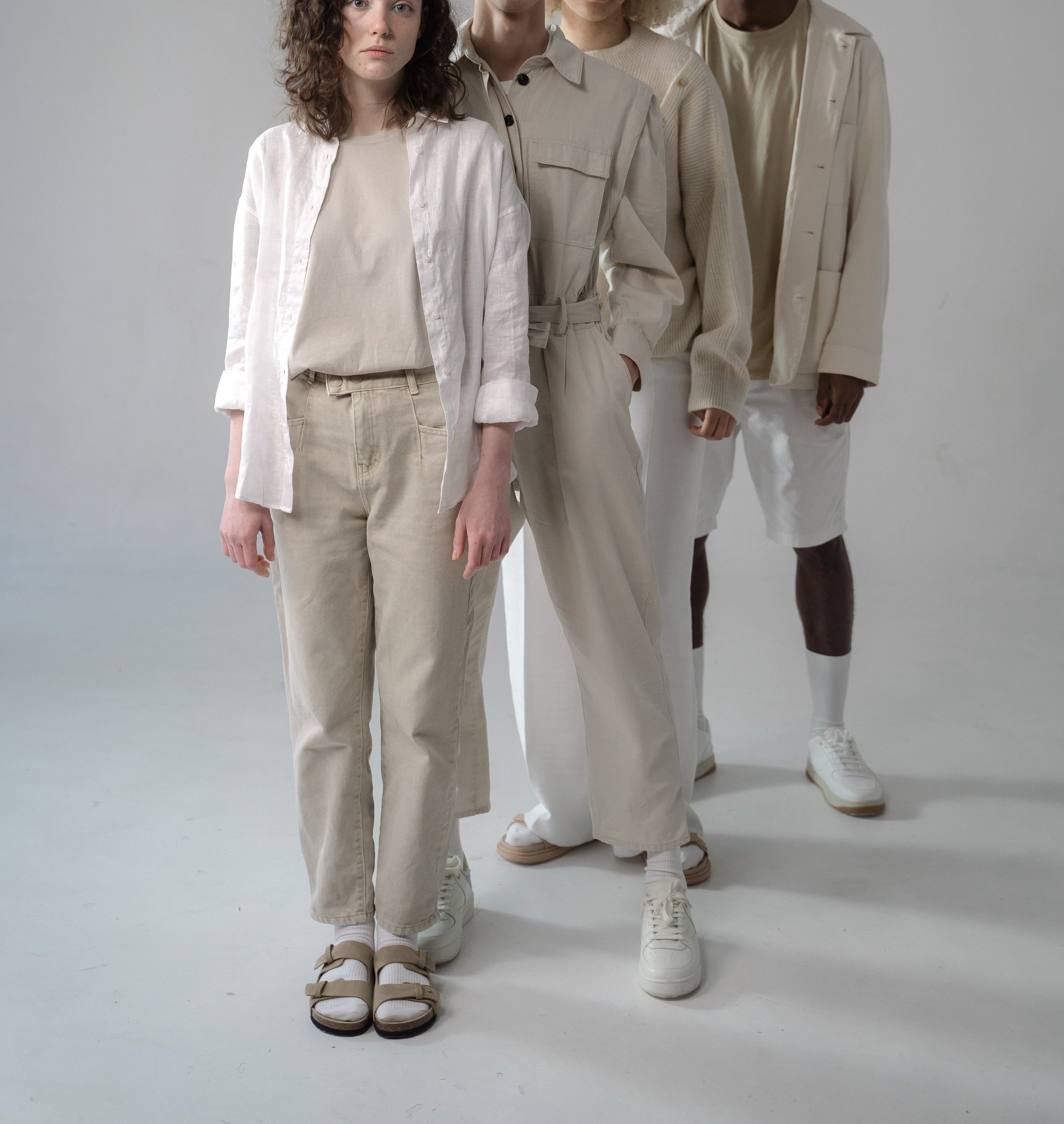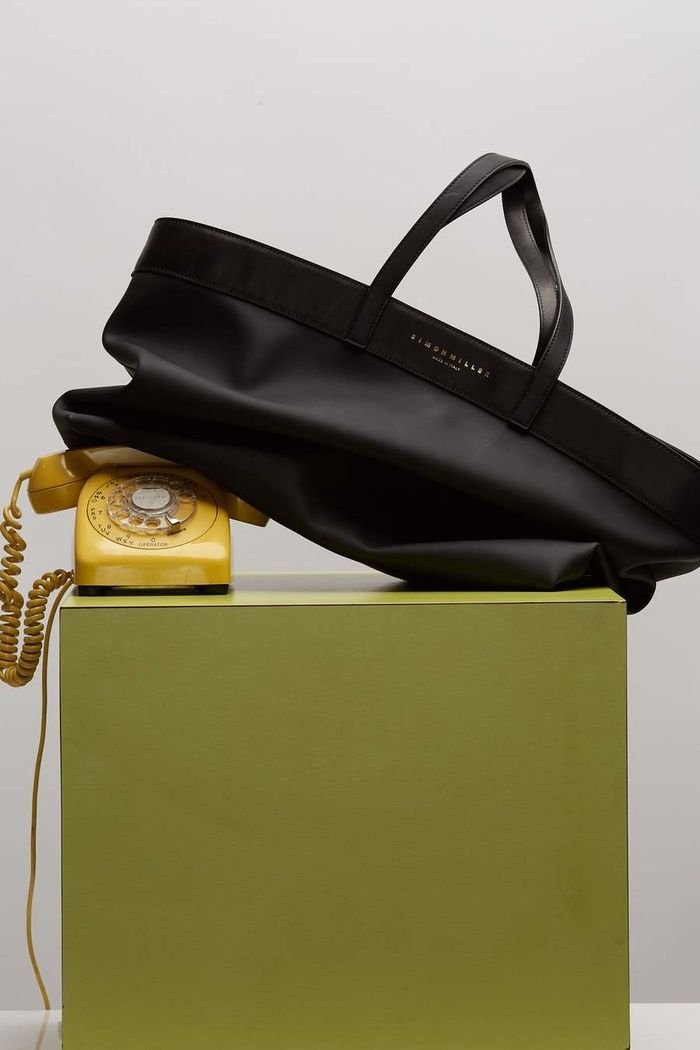Style Workshop Week 6: Assess Your Assets
We often think of high-end purchases like designer bags as "investments." But what if we told you that your regular-old jeans, jackets, and sweaters are also investments? After all, you also spent your hard-earned money on these things based on the expectation of some sort of return in use or enjoyment, right?
To truly move away from disposable fashion, we need to start seeing all of our clothes as investments. It doesn’t matter where you bought them or what they cost. Every piece in your wardrobe has value, whether it’s financial, functional, or emotional. And, by shifting your perspective to view your wardrobe as a “portfolio,” you can start making more intentional decisions that maximize the value it provides, however you define that value.
This week, we’re helping you assess your wardrobe like you would your financial assets, carefully considering whether each piece is still the right investment for you. And if something no longer serves you, it’s time to liquidate and reinvest!
If you’ve been planning a closet cleanout, now’s the perfect time. And if you tend to relate more to the lovely folks on A&E’s Hoarders, don’t worry—we’ve got a set of criteria to help you decide what to keep and what to let go of, all through the lens of your newly defined style.
The Lesson
At Indyx, we don’t define ourselves by any one label: we’re a fashion company, a tech startup, and, as you’ll see today, part fintech platform! What sets us apart? We help you manage your fashion investments. And today’s lesson is your crash course.
Here’s the big picture: your closet is packed with value, and YOU are in control of maximizing it. One of the reasons closet editing can be so difficult is that it can quickly trigger emotions of guilt or regret. It’s easy to think the “big decision” was made when you bought something, and if that piece didn’t deliver the ROI (return on investment) you hoped for, your only choice is to accept a loss—now or later. It feels like no-win scenario, right?
Flip that thinking on its head. Forget about how you acquired these things or how much of a hit your bank account took when you did. That’s all in the past. Instead, imagine someone just handed you this entire “portfolio” of clothes, completely free. Your only job is to figure out what to do with these things now to maximize your happiness from here.
Here’s the key: just because an item isn’t working for you doesn’t mean it’s worthless. It’s an asset that would almost certainly be more highly valued by someone else. It’s not an inherently “wrong” item, you’re just the wrong person for it!
By realizing this and letting those items go, you are increasing the chances of them being actively loved and worn. And, if you choose to resell these pieces (“liquidate”), then you can use that money to effectively transform them (“re-invest”) into different items that are of higher value to you.
With this small mindset shift, a task that once felt like a guilt-ridden chore becomes an opportunity. Suddenly, your wardrobe isn’t a static collection. It’s a dynamic portfolio. The sooner you start seeing your closet as a semi-fungible collection of assets, the closer you’ll be to curating a wardrobe you truly love.
The Homework
This week, we’re ready to evaluate each of your pieces to decide whether you should keep or remove it from your closet.
Now that you have a handy-dandy digital wardrobe, you get to choose whether you tackle this work in real life or digitally! Some tasks may require an IRL evaluation, like trying on pieces to see how they fit you at the moment. But for other tasks—like restyling an item into new outfits—the digital option is (IMO) far easier. We’ll point out when it makes more sense to go digital as we walk through the process.
Set aside your “no brainers”
First, you probably already have some set of items that you don’t have any questions about. They’re your “no brainers”, your foundations, the things you already love and wear all the time. Go ahead and put those aside.
If you are an Indyx Insider (or, are in your free trial period!) then I love using our drag-and-drop tool for this, because it can be really helpful to visualize these pieces together. Organize your “no-brainers” all together at the top of your digital wardrobe. Another option is to create a Collection with these items.
I bet that when you see these pieces together, they already look more visually cohesive than your full wardrobe. Amazing, right? This is proof that you already have the right intuition to curate a wardrobe that aligns with your style. You just need to lean into that intuition and start holding everything else to the same standard as your “no brainers”. This is your starter capsule that you re-build the rest of your wardrobe from.
Evaluate your “not sures”
Alright, here comes the big task. Instead going one-by-one making a final decision on each item before moving on to the next, we recommend doing a few “passes” through this group, using different lenses to remove items. This approach helps focus your mind on one question at a time and avoids getting stuck on any single item.
If watching a physical “purge” pile grow motivates you, go for it! But if you’d rather avoid the mess, your digital wardrobe is a perfect tool. I like tagging items I plan to part with as “sold/donated”, so they’re instantly hidden from my main wardrobe and you can see that more curated wardrobe come together in real-time. Just tag them with today’s date and you can always update it later if needed. Or, build a virtual “purge pile” by adding these items into another Collection.
First pass: comfort & fit
Remove anything that just doesn’t fit the body you have now.
This might be controversial, but we’re not huge fans of holding on to pieces that don’t fit with the idea that they might fit again in the future. Let’s re-visit the concept of your wardrobe as an investment: items that don’t currently fit you are stagnant assets. Their value is completely locked away from you and anyone else until some future time when you *might* be able to realize them again. And that’s a risk! In the meantime, holding onto them only serves to negatively remind you of some past body you wish to return to but haven’t yet.
Would it be better to pass it along to someone else who can actively value the item (by wearing it)? And if you choose to resell, that gives you cash in your pocket that you can re-invest in something that actually serves you today.
But hey! You do you. Maybe you’re super confident that the body change is temporary. Or, maybe there are a few select items that you love so much that the risk of holding onto a stagnant asset is worth the potential payoff of (maybe) being able to wear it again someday. The choice is always in your hands, we’re just here to offer a perspective. Our recommendation for these pieces is to use the “archive” tag so at least they’re not in your face day-to-day.
Beyond whether the buttons button and zippers zipper…also consider more subtle aspects of comfort and fit. Does it feel amazing to wear? Does it fit your body in the manner you prefer, or has something always been a bit “off “ about it? If you answer no to either of these, could you tailor the item to make it more comfortable or fit you better? If not, it’s also time to pass it on to someone else. Life is too short to spend wearing uncomfortable clothes.
Second pass: style
You’ve done the hard work of carefully selecting your style words. At this point, evaluating whether each item fits these words should feel like a simple check, check, check, right?
Well, it can get tricky when some items only check one or two boxes. But that’s okay! Remember, we don’t wear items in isolation; we wear them in outfits.
If an item doesn’t check all three words, think about how you would style it with other pieces to create an outfit that does align with all of your words. Hint: this is where that digital wardrobe can come in clutch to help you quickly visualize different options! If you can’t come up with an outfit with that item in under 2 minutes that fits all three of your words, then it’s probably not a keeper.
Another way to consider an item’s fit with your style is to compare it against your “no brainers”. Use your digital wardrobe to put it visually alongside those keeper items and zoom out. Is it cohesive with those items? If you want your wardrobe to be easy to mix-and-match, then the things you choose to keep should easily mix-and-match with your “no-brainer” items that you’re already wearing all the time!
Third pass: function
Take a hard look at your lifestyle and whether the pieces in front of you realistically fit with that picture.
A glittery floor-length dress that you’ve worn once or twice without another occasion in sight is an obvious example. But, what about something more subtle like a business formal, dry-clean only silk shirt that maybe you used to wear once in awhile, but never reach for now that you’re working from home?
Ask yourself if you’ve worn the item in the last year and if you can realistically picture yourself wearing it in the coming year. If the answer to both is no, it might be time to free it up.
Even if you like something and it fits your style, if you don’t really have the opportunity to wear it, why not sell and re-invest in something you will get to wear? Because that’s how you arrive at a closet full of clothes with LOTS to wear!
Fourth pass: redundancy
Finally, check your closet for repeat items. All of us tend to have our “thing” that we buy way too much. Maybe for you, it’s white tees or black trousers. But unless you’re getting good use out of all of them (i.e. low cost-per-wear across the board) there is no reason you should clutter up your space with repeat items…especially if you can re-invest that value in other pieces that will give you more variation and versatility.
Lastly: tiebreaker questions
By now, you’re hopefully feeling good about your edit pile, physical or digital! Still stuck on a few tricky pieces? Here are our favorite tiebreaker questions to help you decide:
Would I be sad if I lost it? Imagine accidentally leaving it behind in a hotel room, never to be seen again. If that thought doesn’t stir any emotion, it’s not worth keeping. Our closets aren’t for things we see as disposable!
Would I be proud to tell a friend about it? Picture a close friend asking, “Where’d you get that!?” Would you light up to share its story, or would you shrug it off with, “Oh, this? It’s just okay…”? If it’s the latter, you might only be keeping it out of guilt, convenience, or inertia. Not love.
Would I rather have this piece or $20? Because most items in good condition can sell online for at least that. You can also flip the question: “Would I buy this right now for $20?” If the answer’s no, you know what to do.
What to do with the pieces you’ve edited out
Okay! You have a set of things you’re removing from your closet. What now?
Identify your negative patterns
First, it’s important to reflect on exactly why these items no longer work for you. If we don’t learn from the past, we are doomed to repeat our mistakes. Try to identify the patterns in where you’ve gone off-track. Some common patterns that might apply to you include:
I’ve bought things for my fantasy self
I’ve bought things that aren’t practical / useful for my lifestyle
I’ve bought things that just aren’t comfortable for me to wear
I’ve bought things with a shape / cut that I don’t prefer on my body
I’ve bought things that lean too hard into one of my style words / don’t reflect any of my style words
I’ve bought things that aren’t easy to pair with my “no-brainers”
With each, try to get really specific! If you tend to buy for your fantasy self, how exactly is she different from your real self? If you’ve bought things that aren’t easy to pair with your “no-brainers”, what exactly was difficult about them? You can find a ton of insight in reflection here.
Find them a new home!
Practically, where should all these things go? Well, we favor reselling if you’re down for the extra bit of work. Selling your stuff gives it the very best chance of ending up in the hands of someone who genuinely wants it and will put it back into use. It also puts money in your pocket that you can choose to re-invest in new-to-you things that are better suited for your wardrobe “portfolio”, really paying off on that whole investment idea, right?
We find that any items from designer or contemporary brands in good condition are almost always worth your time to sell. Hopefully in the future, we can make it even easier for you to do this directly through Indyx (wink, wink).
Other items in good condition can be donated if you choose, but please do not donate any items with any holes, stains, stretching, or warping. As a rule of thumb, if you wouldn’t be proud to give it to your friend, then you shouldn’t donate it either. Items like these need to go in the trash - or, ideally textile recycling if you have that resource available to you locally.
How to Decide What to Keep, Donate, or Sell (And Do It Sustainably!)
Learn more about how to edit your wardrobe, and the best thing to do with your unwanted items
One last thing: remember how we said it was okay to skip indexing any items you weren’t sure you were keeping yet? Now’s the time.
Until next time…
The Indyx Team’s Homework
Below is this week’s homework as completed by the Indyx Team.
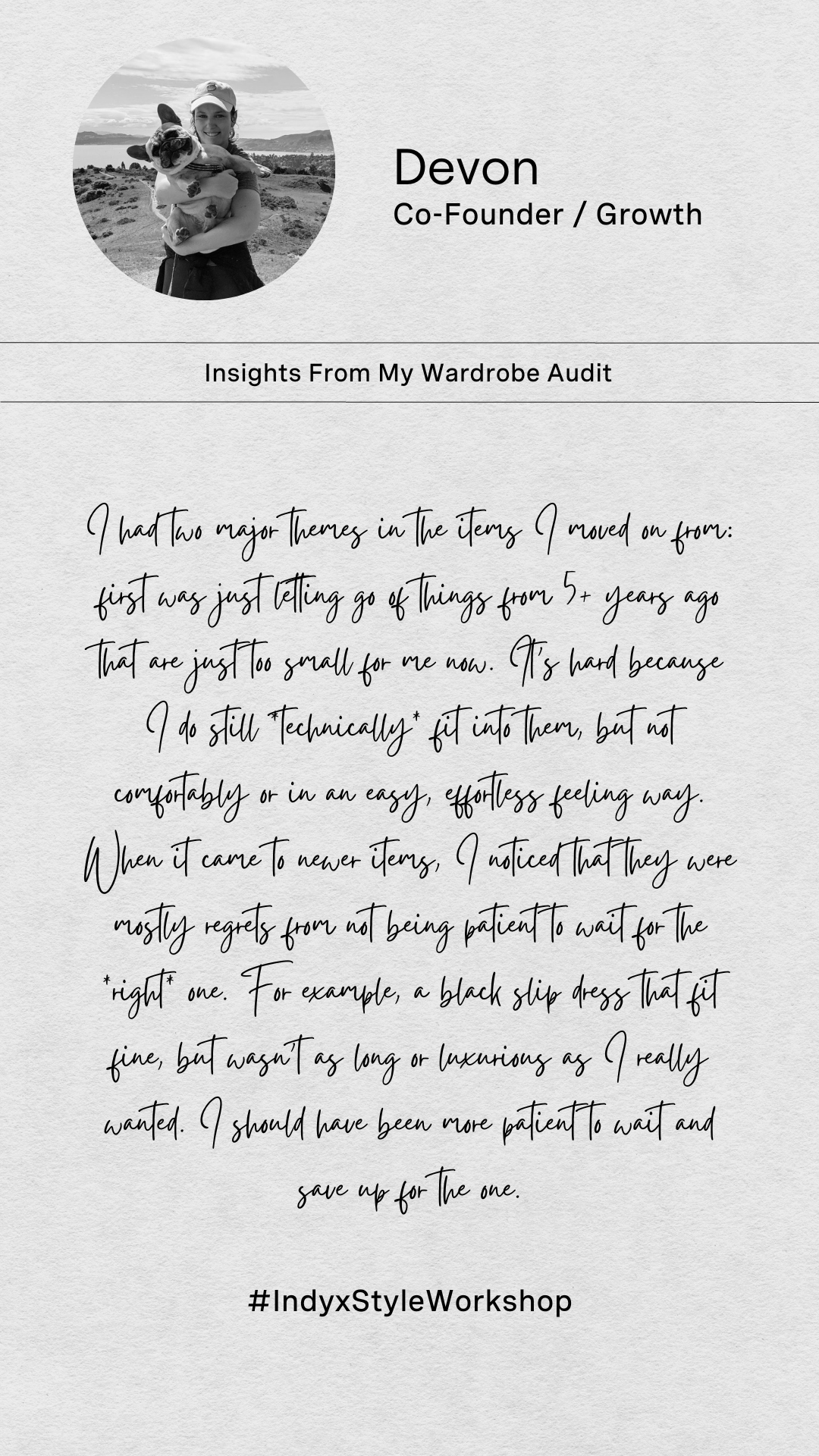
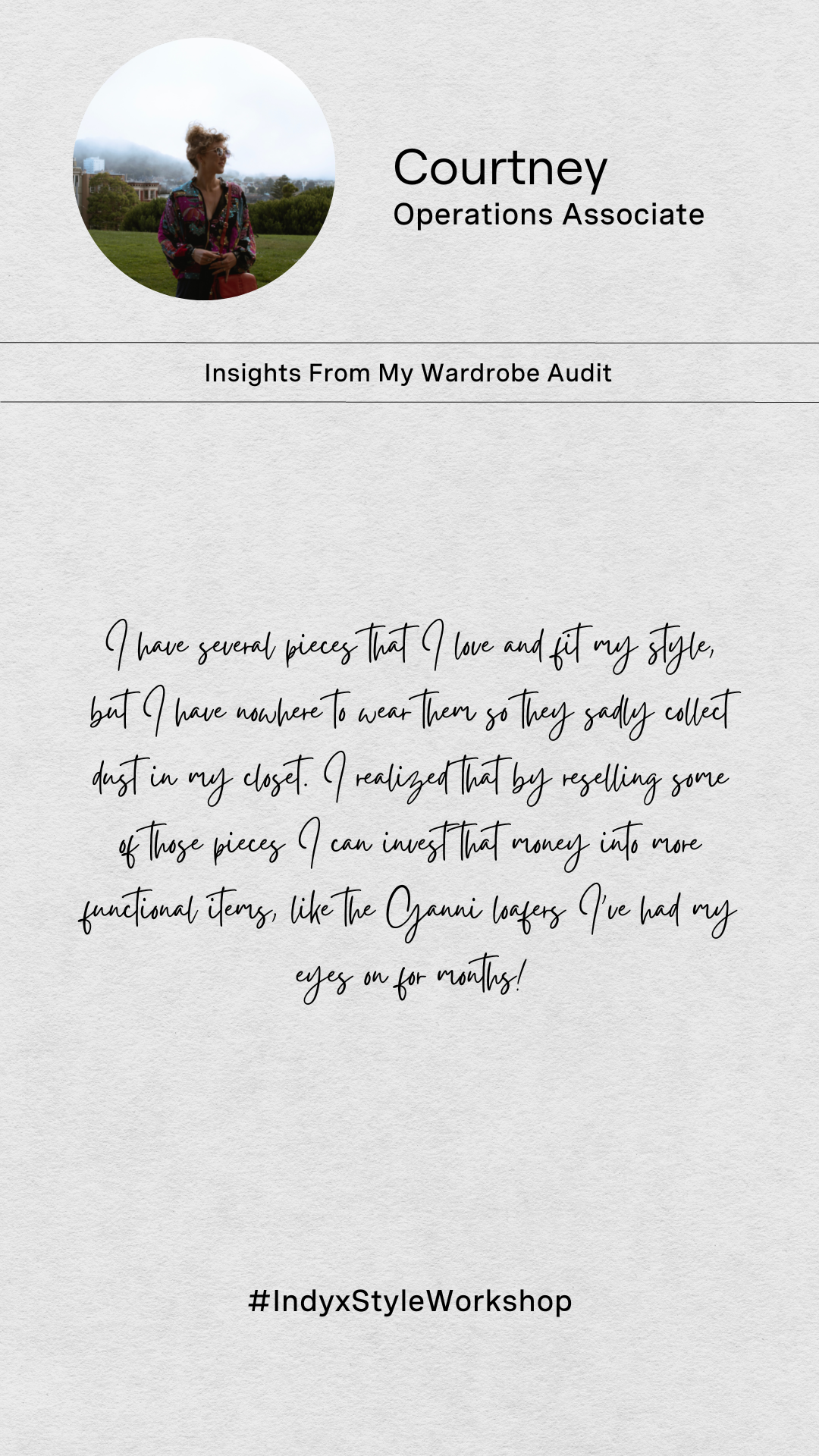
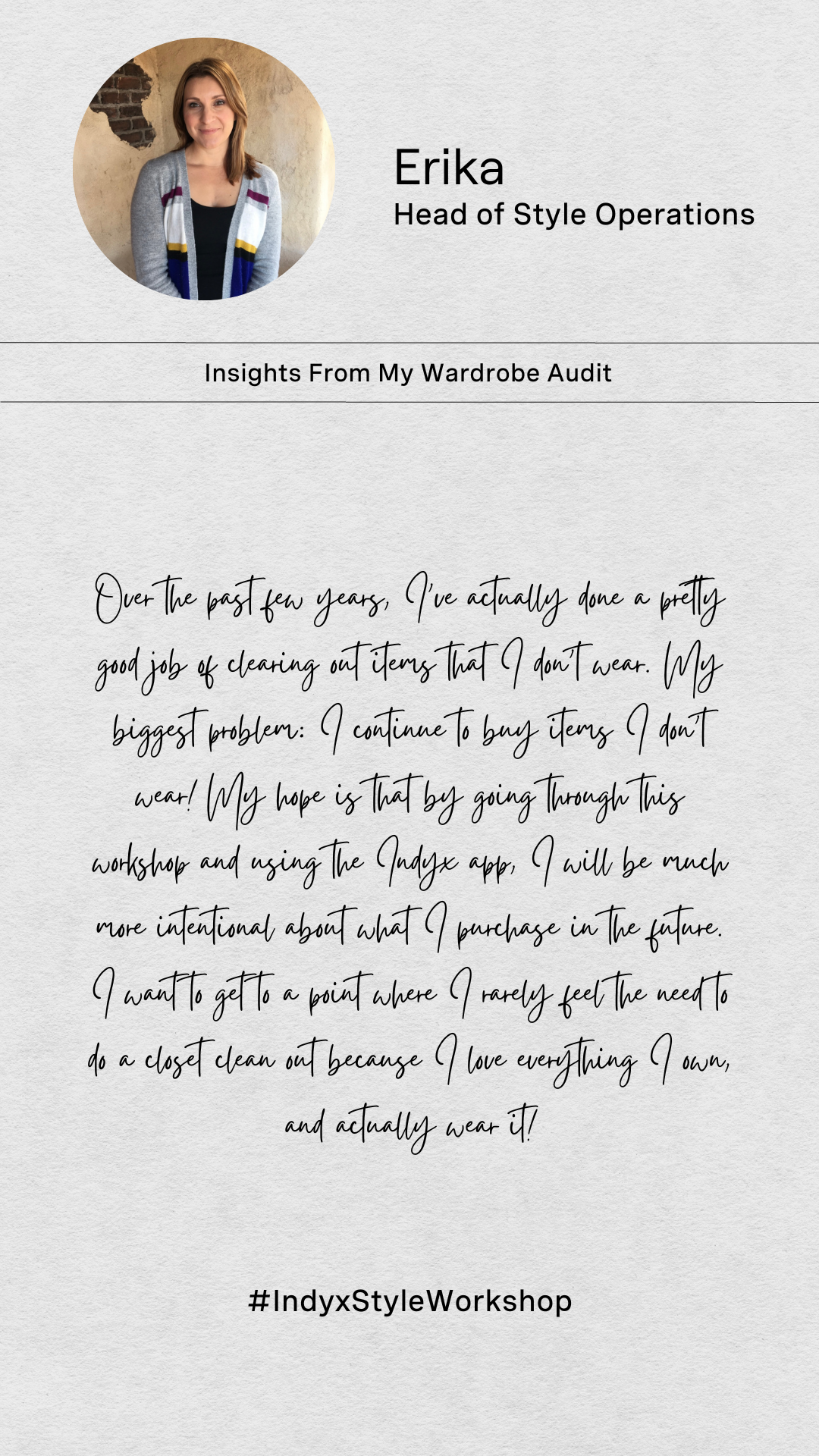
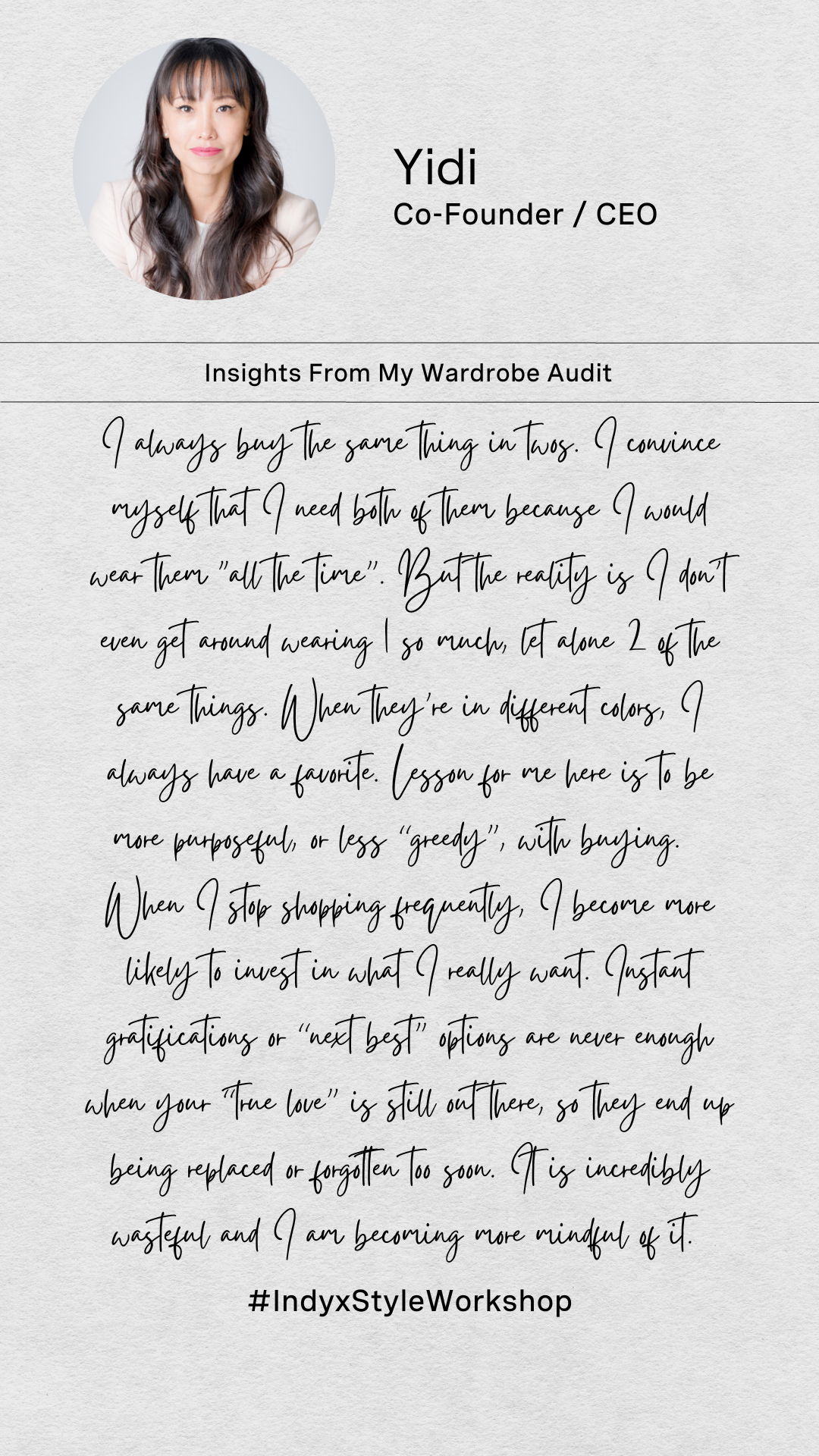
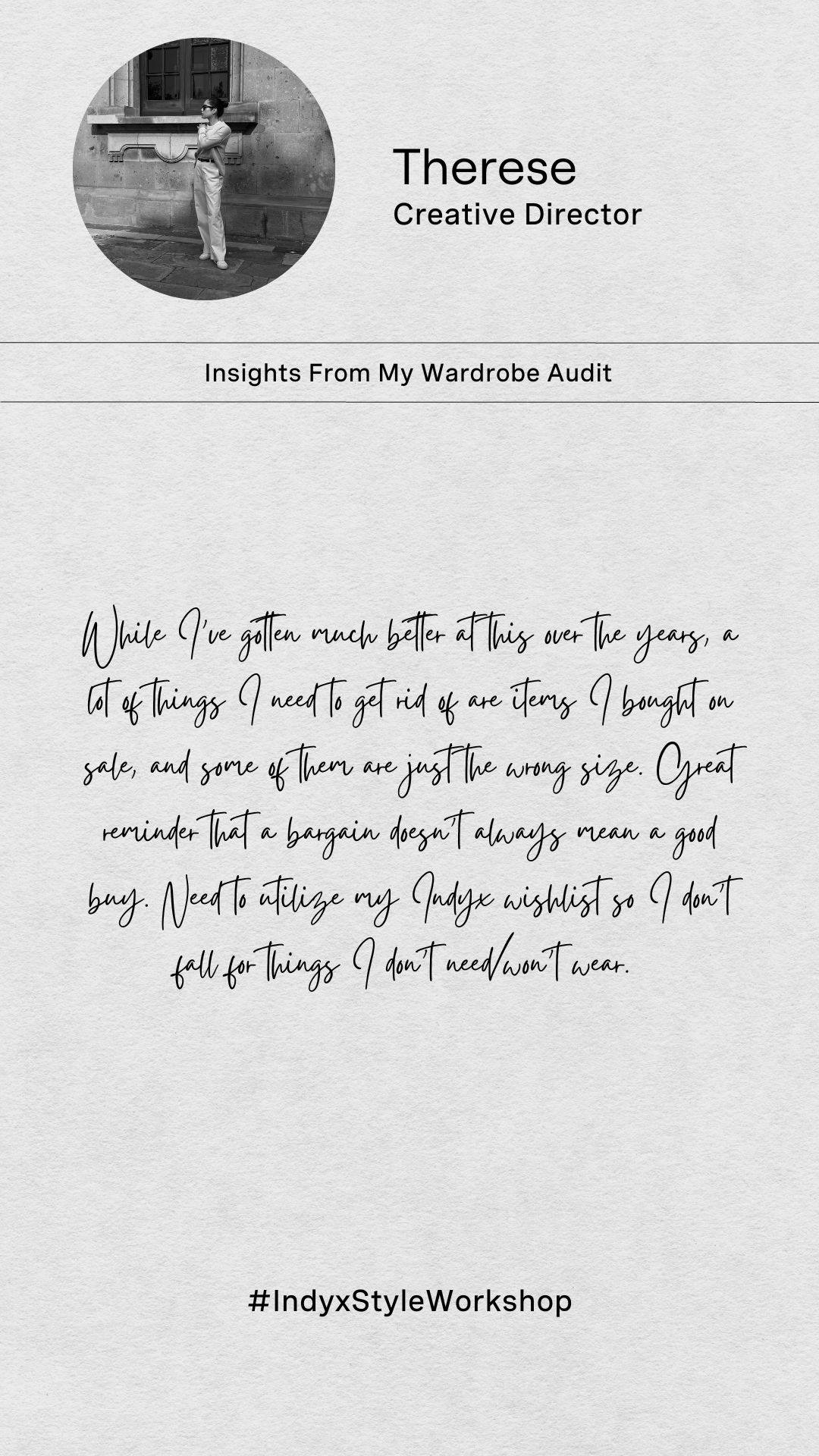
Until next week…
Found yourself here without being signed up for the Style Workshop?
Obviously, we’re giving away this awesome content for free.
But, sign up for this experience in our app and you’ll get this 9-week course conveniently emailed to you at our recommended cadence to help keep you accountable.






